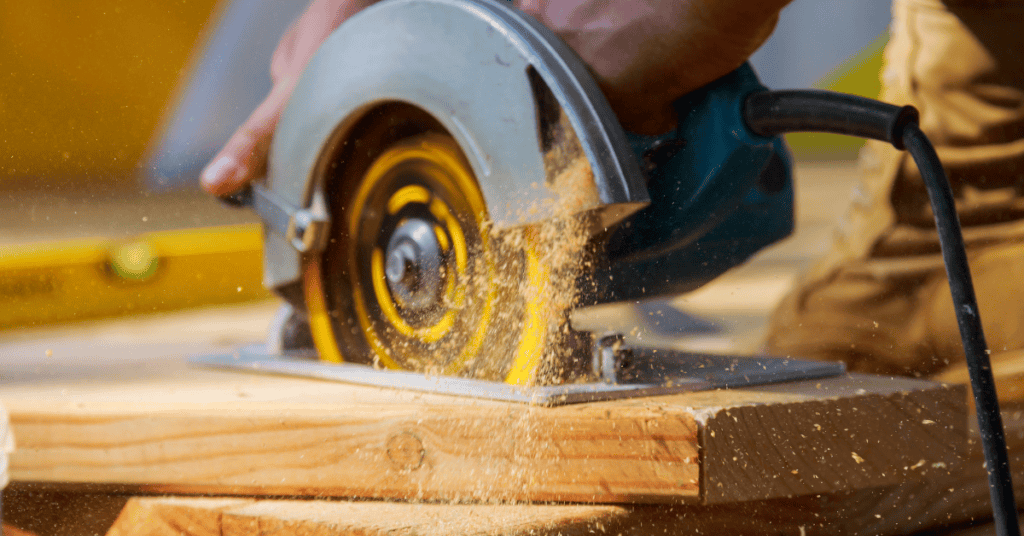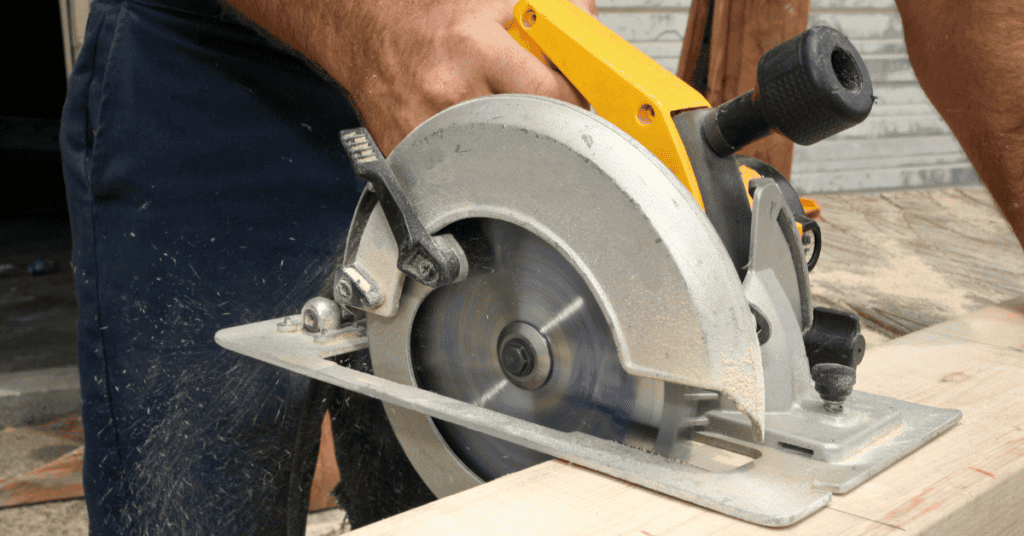Window trims, boxes, cupboards, and so much more all require wood cut at an angle of 45 degrees to be as effective. Woodworkers understand the importance of making this type of angle for their works, but not many know how to do it. The regular cross cuts and ripped cuts are pretty straightforward but when it comes to 45-degree cuts, you need a little bit more.
There are special saws that make cutting 45-degree angles a walk in the park; however, not many woodworkers can afford to buy a saw they only use when making this angle. This is why a lot of people are looking for ways to use more conventional saws to make 45-degree angles. One of such saws is the circular saw.
A circular saw is common and is present in the garden shed of most DIY lovers as well as woodworking shops. A circular saw is used to make straight-line cuts and typically for crosscuts and ripped cuts, but with the right guidance, you can use it to make 45-degree angle cuts. This way, you get to utilize the saw you have without having to buy a specialized saw you only need sparingly.
There are two types of 45-degree cuts, the bevel and miter cuts, and you’ll be learning how to make each cut, but before then, how do they differ from each other?
Difference Between Bevel And Miter 45-Degree Cuts
Bevel and Miter cuts are 45-degree cuts but differ in so many ways. Here are what they are and how they differ:
Bevel
Bevel cuts are angular cuts made relative to the face of the wood. The 45-degree bevel angles see the face of the woods from angle 90 with each other. This is because the angle runs from the top down through the sides of the square side of the wood.
Miter
Unlike bevel cuts, miter cuts are angular cuts made in relation to the square side of the wood. This way, the square sides form 90 degrees when joined with each other. The angle runs from the top of the face down.
How to Use a Circular Saw to Cut a 45-Degree Angle?

Your circular saw can do more than cut ripped or crosscuts. You can achieve angular cuts as long as they are straight lines.
Materials Needed
- Wood
- Circular saw
- Sandpaper
- Level
- Two clamps
- Tape
- Speed square
Steps
Here is a concise guide to follow:
Step 1: Prepare Your Setup

- Prepare the area by clearing the space to create room.
- Wear protective equipment for safety like protective boots, gloves, and goggles.
- Setup your circular saw, ensuring all nuts are properly screwed and ready to go.
- Check the wiring if you’re not using a cordless circular saw.
- You also want to choose the lumber to cut. By doing all these preparations, you’ve set yourself up for success.
Step 2: Choose the Type of Cut
- Before you go ahead making cuts, you need to choose which type you want to make. Are you making a bevel cut that is made in relation to the face of the wood, a miter cut made in relation to the square side, or both?
- Remember, the type of joint you want to create will determine the cut your choose.
Step 3: Measure And Mark the Piece

- You’ll need your tape to measure the cut on the side of the wood you choose, depending on the type of cut needed.
- Mark the point where you want to start or end the 45-degree cut.
- Place the speed square on the point, adjusting it, so it sits perfectly on the wood for that 45-degree angle. Using a pencil, draw a line to show the line of cut.
Also Read: 14 Sturdy DIY Table Top Plans & Ideas
Step 4: Set the Depth of Cut
- The depth of the cut is how deep the blades of the saw go and is dependent on the size of the wood, the side of the cut, and your needs.
- For making 45-degree angles, you’ll need the depth of cut to match the breadth for bevel cuts and the width for miter cuts.
- Unplug the circular saw if delayed with a saw with a cord.
- Switch off and engage safety for cordless saws.
- Retreat the blade for extra safety and then place the saw on the wood board.
- Adjust the saw base plate till the saw is ¼” deeper than the wood board. At this point, secure the adjusting lever to lock in the depth.
Step 5: Line up the Board And Set the Saw Guide

- To achieve an accurate 45-degree angular cut on your wood, you’ll need to properly align the board. The board is set at a level that is comfortable for you. A tabletop can be a decent location to place the board.
- Also, ensure you can cut through easily without having to strain your body, as this can affect your accuracy. Line up the workpiece so it is in perfect alignment with the saw blade.
- Next, set the 45-degree saw guide on the side of the blade and ensure it is aligned correctly.
- Clamp it down, so it doesn’t slip while working. Go over the angle again to be extra sure it is correct. This is so you don’t make a slightly bigger or smaller angle than the 45 degrees you set out to make.
- Put the saw blade exactly on the 45-degree line you drew earlier. Following this line carefully is the key to getting an accurate angle.
- To do this, you’ll need to grip the saw tightly while ensuring you keep it as steady as possible.
Step 6: Make the Cut
- At this point, you’re ready to make that cut. Whether it is a miter cut, a bevel cut, or both, you can let the blade do the work.
- But before that, remember you should have your protective gear on, which includes the goggles, as you’ll have dust and chips flying around.
- Turn on the place and wait for it to reach the desired speed.
- Place the blade on the marked spot, hold the circular saw handle form and then start the cut from the edge of the piece.
- You may need to apply some pressure to keep it going smoothly, but ensure you only exert a little pressure on the board as too much pressure can lead to a loss of control which will spoil your cut.
- Do you need more light? Utilize the LED light; most circular saws have to provide extra lighting so you can make that precise 45-degree cut.
- Maintain a steady cut and keep the base plate and saw module aligned till you’ve finished the cut.
- Do this cut for both ends of the board and as many boards as required to make that box, window trim, or cupboard.
Step 7: Sand the Cut
- Safely unplug the saw and engage its blade safely.
- Remove the clamps and the 45-degree saw guide.
- You want to raise the board so you can easily sand the area you just cut.
- After making the 45-degree angular cut on the board, it is still not ready for use till you’ve cleaned it up. Hopefully, the dust collection port has sucked most of the dust particles from the area.
- You can then use sandpaper or a file to smoothen the cut.
- Rub the sandpaper on the cut till you’ve gone from a rough area to a clean and smooth cut.
- Wipe the area with a rag, and you have an accurate 45-degree angle on your board.
Conclusion
While you can use the special miter or bevel saws to make 45-degree angles on your board, this is not a necessity. You can utilize the more common circular saw to get your precise angles on the board.
Take precautions while using the circular saw. Read the user manual beforehand and familiarize yourself with how it works.

